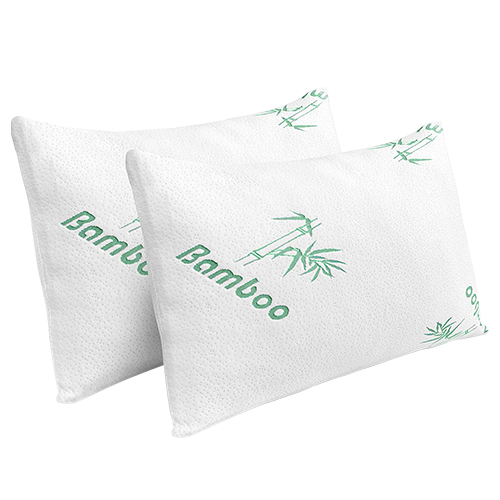Why Is the Memory Foam Mattress Redefining the Future of Sleep Comfort?
2025-11-03
A memory foam mattress is a specialized bedding product designed to deliver optimal comfort, body alignment, and motion isolation through its unique viscoelastic material. Originally developed by NASA in the 1960s to improve seat cushioning and crash protection for astronauts, memory foam has evolved into one of the most sought-after mattress technologies worldwide. It adapts to the sleeper’s body shape by responding to heat and pressure, allowing for personalized support that traditional spring or latex mattresses cannot replicate.
The main purpose of a memory foam mattress is to create a sleeping surface that evenly distributes body weight, minimizes pressure points, and enhances sleep quality. In recent years, advancements in foam technology, such as cooling gel infusions, open-cell designs, and hybrid layering, have made these mattresses even more comfortable and breathable — solving the historical issue of heat retention associated with older foam designs.
Memory foam mattresses are now considered the gold standard in premium sleep systems, favored by consumers for their ability to improve spinal alignment, relieve chronic pain, and reduce partner disturbance during the night.
Key Technical Specifications of Modern Memory Foam Mattresses
| Feature | Description | Benefit |
|---|---|---|
| Material Composition | High-density viscoelastic polyurethane foam | Adapts to body contour for pressure relief |
| Foam Density | Typically ranges between 40–85 kg/m³ | Higher density offers better durability and support |
| Thickness Options | 8–14 inches (20–35 cm) | Customizable firmness and cushioning levels |
| Comfort Layers | Multi-layered structure with gel-infused or open-cell foam | Promotes airflow and temperature balance |
| Firmness Levels | Soft, medium, or firm | Suitable for various sleep positions and body weights |
| Motion Isolation | Excellent | Minimizes partner movement transfer |
| Durability | 8–10 years average lifespan | Long-lasting investment for healthy sleep |
| Certifications | CertiPUR-US® or OEKO-TEX® | Ensures non-toxic, eco-friendly foam composition |
Why Choose a Memory Foam Mattress Over Traditional Options?
Sleep is more than a daily habit—it’s a biological necessity that influences mental clarity, physical health, and emotional balance. The right mattress is at the core of quality rest, and memory foam stands out because it scientifically adapts to individual needs.
a. Pressure Relief and Spinal Alignment
Traditional spring mattresses can create pressure points around the shoulders, hips, and back. In contrast, memory foam distributes weight evenly, supporting the spine’s natural curvature and alleviating tension in sensitive areas. This makes it particularly beneficial for people with back pain, arthritis, or poor posture.
b. Motion Isolation and Partner Comfort
Couples appreciate memory foam for its motion isolation capabilities. When one person moves, the foam absorbs the motion instead of transferring it across the bed, allowing uninterrupted sleep for both partners.
c. Allergy-Friendly Materials
High-quality memory foam mattresses are hypoallergenic, resistant to dust mites, and made from low-VOC materials. This is essential for maintaining indoor air quality and preventing allergic reactions.
d. Cooling Technologies
Earlier generations of memory foam were known for trapping heat. Today’s models incorporate gel particles, bamboo charcoal infusions, and ventilated foam layers to regulate temperature throughout the night, offering a cool and fresh sleeping experience.
e. Longevity and Value for Money
While the initial cost of a memory foam mattress may be higher than a standard spring mattress, its extended durability, health benefits, and minimal maintenance requirements make it a superior long-term investment.
f. Adaptability to Bed Frames
Memory foam mattresses can be paired with various bed bases — including platform beds, adjustable frames, and slatted foundations — providing design flexibility for modern homes.
How Is Memory Foam Mattress Technology Evolving to Shape the Future of Sleep?
Innovation is at the heart of the sleep industry, and memory foam is leading the transformation. Technological advancements are driving a new generation of smarter, healthier, and more sustainable mattresses.
a. Smart Temperature Regulation
Future foam formulations are incorporating phase-change materials (PCMs) that dynamically absorb and release heat to maintain optimal body temperature. This addresses one of the most common consumer complaints—sleeping too hot.
b. Sustainable Materials and Eco Production
The demand for eco-conscious products has inspired manufacturers to replace petroleum-based foams with bio-based alternatives, such as plant-derived polyols and natural latex blends. Water-based adhesives and recyclable packaging are becoming industry norms.
c. AI-Based Ergonomic Design
Cutting-edge mattress producers are using AI modeling and pressure mapping to design foams that support the unique body contours of each sleeper. Some smart beds even include built-in sensors that track sleep patterns and adjust firmness in real-time.
d. Modular Mattress Systems
To meet personalized comfort preferences, modular foam designs are emerging. Users can swap or rearrange layers to modify firmness levels as lifestyle or body needs change.
e. Hybrid Integration
The hybrid trend—combining memory foam with pocket coils or latex—provides the best of both worlds: the contouring comfort of foam with the bounce and airflow of innersprings.
f. Durability Enhancements
New-generation foams are engineered to resist sagging and deformation, ensuring long-term structural integrity. Reinforced edge support technology is also improving stability for full-edge sleeping comfort.
Common Questions About Memory Foam Mattresses
Q1: How long does a memory foam mattress typically last?
A1: A high-quality memory foam mattress generally lasts between 8 to 10 years, depending on its density, usage, and maintenance. Mattresses with higher foam density and proper rotation (every 3–6 months) can extend their lifespan significantly. Regular cleaning and using a breathable mattress protector also contribute to longevity.
Q2: Do memory foam mattresses cause overheating during sleep?
A2: Older models had issues with heat retention, but modern memory foam mattresses have evolved. Today, cooling technologies such as gel infusion, copper particles, open-cell structures, and breathable covers enhance airflow and dissipate heat efficiently. Therefore, sleepers can enjoy a balanced temperature throughout the night, even in warmer climates.
Why Memory Foam Mattresses Represent the Future of Restful Living
The memory foam mattress has revolutionized sleep science by bridging the gap between comfort and technology. As global lifestyles become more demanding, consumers increasingly seek solutions that promote better rest, physical recovery, and mental wellness. Memory foam continues to deliver on these expectations through scientific precision, ergonomic engineering, and environmental responsibility.
The growing popularity of these mattresses reflects a shift toward a health-conscious and sustainability-driven mindset. From its NASA origins to its presence in millions of bedrooms today, memory foam embodies the evolution of human-centered design. It’s no longer just a mattress—it’s a lifestyle upgrade rooted in science and comfort.
At the forefront of this transformation, Zhehe offers premium-grade memory foam mattresses crafted with advanced pressure-relief technology, cooling innovations, and sustainable materials. Each mattress is designed to adapt naturally to the body, ensuring every night’s rest contributes to long-term well-being.
For those seeking a personalized sleep experience that blends luxury with performance, explore the future of comfort with Zhehe.
Contact us to discover how Zhehe’s memory foam mattress collection can redefine your sleeping experience and support a healthier, more restful life.























































